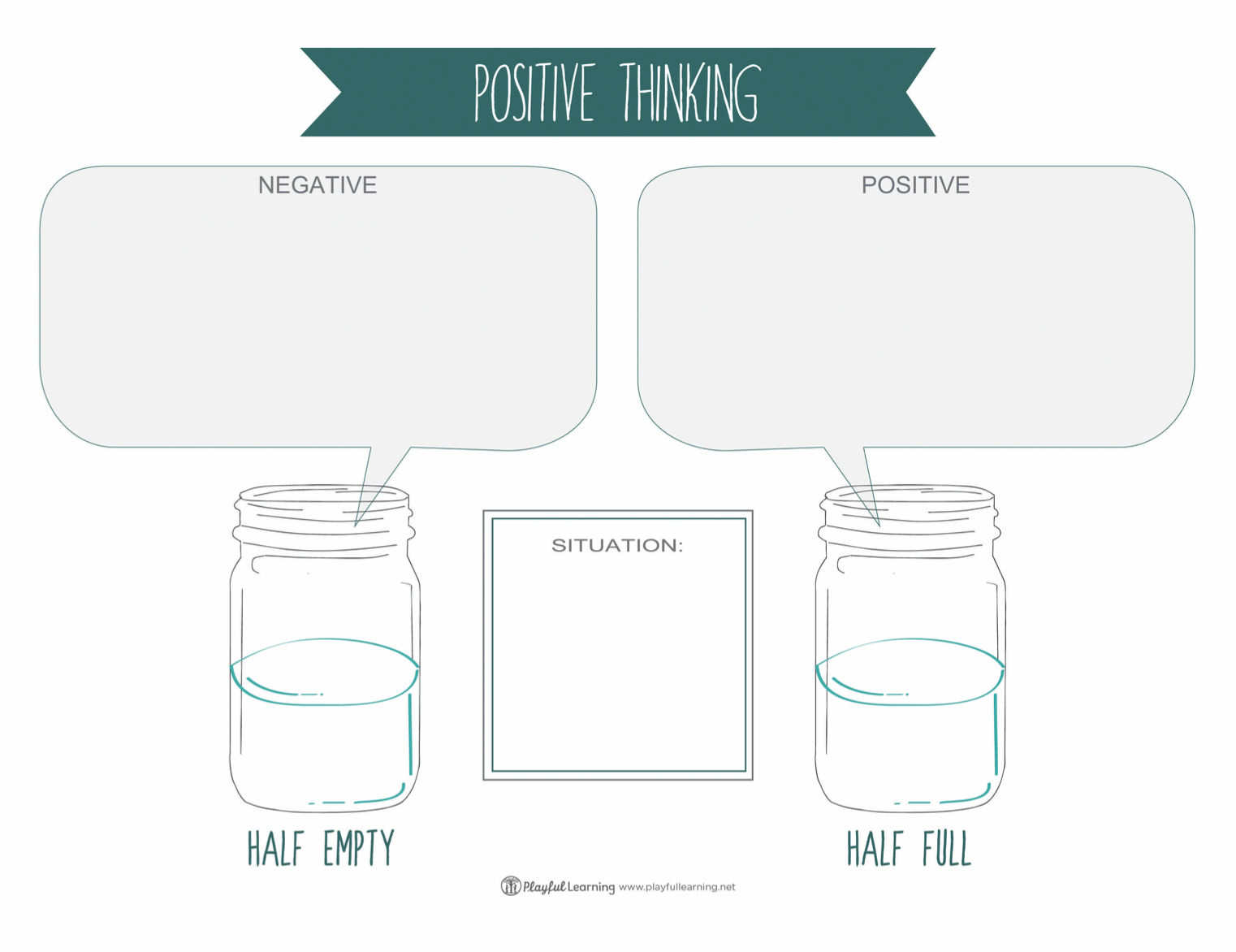Glass Half Full: The Power of Positive Thinking

One of the most powerful lessons that we can teach our children is that they have the power to control their thoughts. Cognitive science has confirmed that positive thinking is a learned trait and that the more children practice this skill the stronger their neural connections become.
Yes, sometimes life sends us challenging situations, but we have the ability to make a choice about how we are going to feel about them. We can choose to see the good or positive aspects of a situation and although it does not always feel like it, there is usually an important life lesson that can be found in almost any circumstance. This understanding enables children to handle life’s ups and downs with more resiliency, which in turn leads to happier, healthier children.
Current brain research has proven that stress inhibits learning. Simply put, when people experience stress, the Amygdala prevents the flow of information into our prefrontal cortex, where executive functioning takes place, thus prohibiting long term memory and higher order thinking. Children learn through emotions, feelings, and experiences. Positive, playful emotions, promote learning, where as negative emotions, like stress and anxiety, hinder it. An optimistic brain works better!
Gather
- A few thoughts on different situations in your life with school, friends, or family.
- A glass of water filled halfway with water
- The Positive Thinking printable
- Writing and drawing materials

Explore
Start out by looking at your glass of water. You can explain that how they view the glass can teach them a lot about them themselves and how they see the world.
Ask your children what they see; is this glass half empty or half full? Explain that while both answers are correct, they have the power to choose how they view the glass—through a positive, “half-full” perspective or a negative “half-empty” point of view. Next you can explain that when they choose to see things in a positive light, they will tend to be happier throughout their lives.
Next, Invite your children to think of a challenging situation in their life. Use the Positive Thinking printable and ask them to write it down, along with any “half-empty” thoughts they have or are feeling. Next, encourage them to think of something positive that can come from it and write it down in the “half-full” box. Discuss your responses as a family. See what you can learn from each other’s experiences.
After doing this activity, make sure to keep the conversation going. Help identify when a “half empty” comment has been made and brainstorm ways to find the “half fullness” in everyday situations. The goal is to encourage children to be able to use positive “self-talk” to help themselves get through stressful situations and daily challenges.
Read
- The Feel Good Book by Todd Parr
- How Full is Your Bucket by Tom Rath and Mary Reckmeyer
- Be Happy: A Little Book to Help You Live a Happy Life by Monica Sheehan
- Taking a Bath with the Dog and Other Things that Make Me Happy by Scott Menchin
Ponder
- What are some ways you can support each other as a family to try to find the positive aspects of different challenges as they present themselves? Is there a little sign or reminder you can give each other to change your way of thinking when you need it most?
- Are there any situations where you can’t seem to see a silver lining? Try to dig a bit deeper and think about what lesson you might be able to learn?
- Talk about a time in your life that initially felt half-empty, but turned out to have positive consequences.
*This post contains Amazon Affiliate Links.
